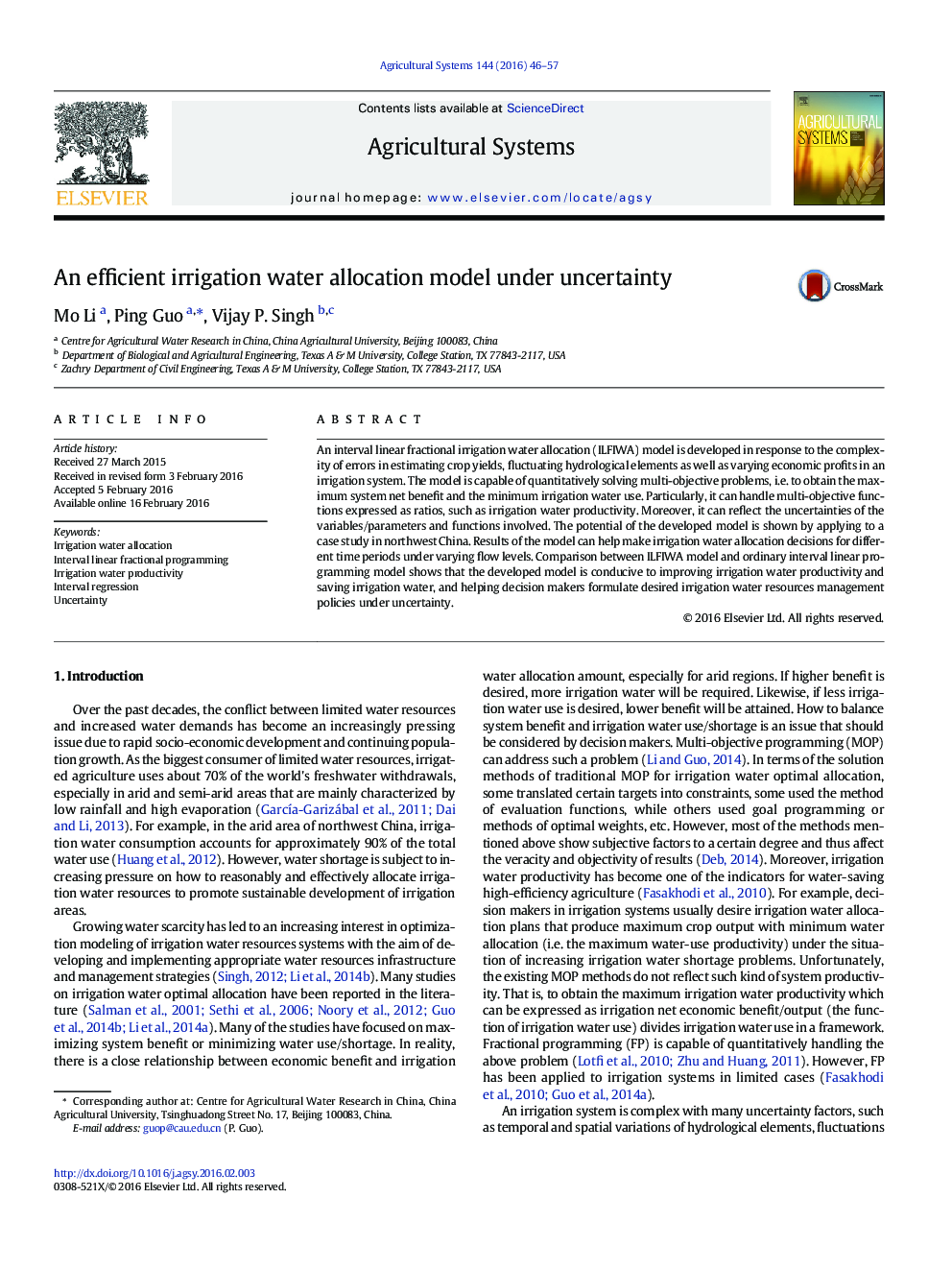| Article ID | Journal | Published Year | Pages | File Type |
|---|---|---|---|---|
| 4491139 | Agricultural Systems | 2016 | 12 Pages |
•An efficient irrigation water allocation model under uncertain is developed.•Interval uncertainty of the linear fractional model can be handled.•Tradeoffs between economic benefits and water allocation can be tackled.•Dynamic water allocation decisions under varying flow levels can be obtained.•Comparison show that water is saved and irrigation water productivity increases.
An interval linear fractional irrigation water allocation (ILFIWA) model is developed in response to the complexity of errors in estimating crop yields, fluctuating hydrological elements as well as varying economic profits in an irrigation system. The model is capable of quantitatively solving multi-objective problems, i.e. to obtain the maximum system net benefit and the minimum irrigation water use. Particularly, it can handle multi-objective functions expressed as ratios, such as irrigation water productivity. Moreover, it can reflect the uncertainties of the variables/parameters and functions involved. The potential of the developed model is shown by applying to a case study in northwest China. Results of the model can help make irrigation water allocation decisions for different time periods under varying flow levels. Comparison between ILFIWA model and ordinary interval linear programming model shows that the developed model is conducive to improving irrigation water productivity and saving irrigation water, and helping decision makers formulate desired irrigation water resources management policies under uncertainty.
